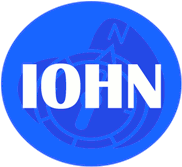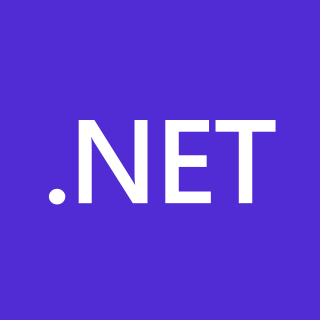Cocoa is Apple's native object-oriented application programming interface (API) for its desktop operating system macOS.
Documentation is any communicable material that is used to describe, explain or instruct regarding some attributes of an object, system or procedure, such as its parts, assembly, installation, maintenance, and use. As a form of knowledge management and knowledge organization, documentation can be provided on paper, online, or on digital or analog media, such as audio tape or CDs. Examples are user guides, white papers, online help, and quick-reference guides. Paper or hard-copy documentation has become less common. Documentation is often distributed via websites, software products, and other online applications.

The Geography Markup Language (GML) is the XML grammar defined by the Open Geospatial Consortium (OGC) to express geographical features. GML serves as a modeling language for geographic systems as well as an open interchange format for geographic transactions on the Internet. Key to GML's utility is its ability to integrate all forms of geographic information, including not only conventional "vector" or discrete objects, but coverages and sensor data.

A digital object identifier (DOI) is a persistent identifier or handle used to uniquely identify various objects, standardized by the International Organization for Standardization (ISO). DOIs are an implementation of the Handle System; they also fit within the URI system. They are widely used to identify academic, professional, and government information, such as journal articles, research reports, data sets, and official publications.
ISO 10303 is an ISO standard for the computer-interpretable representation and exchange of product manufacturing information. It is an ASCII-based format. Its official title is: Automation systems and integration — Product data representation and exchange. It is known informally as "STEP", which stands for "Standard for the Exchange of Product model data". ISO 10303 can represent 3D objects in Computer-aided design (CAD) and related information.
In library and archival science, digital preservation is a formal process to ensure that digital information of continuing value remains accessible and usable in the long term. It involves planning, resource allocation, and application of preservation methods and technologies, and combines policies, strategies and actions to ensure access to reformatted and "born-digital" content, regardless of the challenges of media failure and technological change. The goal of digital preservation is the accurate rendering of authenticated content over time.
A metadata registry is a central location in an organization where metadata definitions are stored and maintained in a controlled method.
NIEMOpen, frequently referred to as NIEM, originated as an XML-based information exchange framework from the United States, but has transitioned to an OASISOpen Project. This initiative formalizes NIEM's designation as an official standard in national and international policy and procurement. NIEMOpen's Project Governing Board recently approved the first standard under this new project; the Conformance Targets Attribute Specification (CTAS) Version 3.0. A full collection of NIEMOpen standards are anticipated by end of year 2024.
In information science, an upper ontology is an ontology that consists of very general terms that are common across all domains. An important function of an upper ontology is to support broad semantic interoperability among a large number of domain-specific ontologies by providing a common starting point for the formulation of definitions. Terms in the domain ontology are ranked under the terms in the upper ontology, e.g., the upper ontology classes are superclasses or supersets of all the classes in the domain ontologies.
The ISO 15926 is a standard for data integration, sharing, exchange, and hand-over between computer systems.
The term Open Archival Information System refers to the ISO OAIS Reference Model for an OAIS. This reference model is defined by recommendation CCSDS 650.0-B-2 of the Consultative Committee for Space Data Systems; this text is identical to = 57284 ISO 14721:2012. The CCSDS's purview is space agencies, but the OAIS model it developed has proved useful to other organizations and institutions with digital archiving needs. OAIS, known as ISO 14721:2003, is widely accepted and utilized by various organizations and disciplines, both national and international, and was designed to ensure preservation. The OAIS standard, published in 2005, is considered the optimum standard to create and maintain a digital repository over a long period of time.
Gellish is an ontology language for data storage and communication, designed and developed by Andries van Renssen since mid-1990s. It started out as an engineering modeling language but evolved into a universal and extendable conceptual data modeling language with general applications. Because it includes domain-specific terminology and definitions, it is also a semantic data modelling language and the Gellish modeling methodology is a member of the family of semantic modeling methodologies.
Geospatial metadata is a type of metadata applicable to geographic data and information. Such objects may be stored in a geographic information system (GIS) or may simply be documents, data-sets, images or other objects, services, or related items that exist in some other native environment but whose features may be appropriate to describe in a (geographic) metadata catalog.
Trustworthy Repositories Audit & Certification (TRAC) is a document describing the metrics of an OAIS-compliant digital repository that developed from work done by the OCLC/RLG Programs and National Archives and Records Administration (NARA) task force initiative.

Metadata is "data that provides information about other data", but not the content of the data itself, such as the text of a message or the image itself. There are many distinct types of metadata, including:

Integrated Operations in the High North is a unique collaboration project that during a four-year period starting May 2008 is working on designing, implementing and testing a Digital Platform for what in the upstream oil and gas industry is called the next or second generation of Integrated Operations. The work on the Digital platform is focussed on capture, transfer and integration of real-time data from the remote production installations to the decision makers. A risk evaluation across the whole chain is also included. The platform is based on open standards and enables a higher degree of interoperability. Requirements for the digital platform come from use cases defined within the Drilling and Completion, Reservoir and Production and Operations and Maintenance domains. The platform will subsequently be demonstrated through pilots within these three domains.
POSC Caesar Association (PCA) is an international, open, not-for-profit, member organization that promotes the development of open specifications to be used as standards for enabling the interoperability of data, software and related matters.

The .NET Framework is a proprietary software framework developed by Microsoft that runs primarily on Microsoft Windows. It was the predominant implementation of the Common Language Infrastructure (CLI) until being superseded by the cross-platform .NET project. It includes a large class library called Framework Class Library (FCL) and provides language interoperability across several programming languages. Programs written for .NET Framework execute in a software environment named the Common Language Runtime (CLR). The CLR is an application virtual machine that provides services such as security, memory management, and exception handling. As such, computer code written using .NET Framework is called "managed code". FCL and CLR together constitute the .NET Framework.

The Australian Research Data Commons (ARDC) is a limited company, formed on 1 July 2018 by combining the Australian National Data Service (ANDS), Nectar and Research Data Services (RDS). Its purpose is to enable Australian researchers and industry access to nationally significant eInfrastructure, skills platforms, and data collections.
C++/CX(C++ component extensions) is a language projection for Microsoft's Windows Runtime platform. It takes the form of a language extension for C++ compilers, and it enables C++ programmers to write programs that call Windows Runtime (WinRT) APIs. C++/CX is superseded by the C++/WinRT language projection, which is not an extension to the C++ language; rather, it's an entirely standard modern ISO C++17 header-file-based library.





